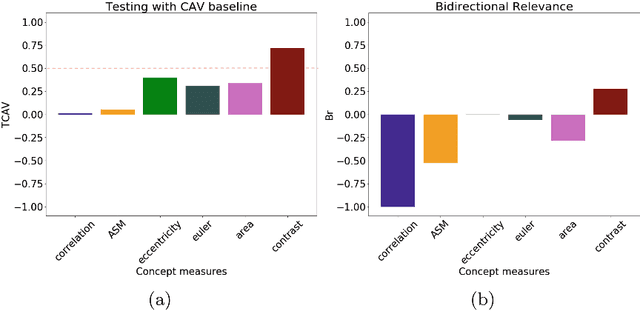Sergio Pereira
Generalizing AI-driven Assessment of Immunohistochemistry across Immunostains and Cancer Types: A Universal Immunohistochemistry Analyzer
Jul 30, 2024Abstract:Despite advancements in methodologies, immunohistochemistry (IHC) remains the most utilized ancillary test for histopathologic and companion diagnostics in targeted therapies. However, objective IHC assessment poses challenges. Artificial intelligence (AI) has emerged as a potential solution, yet its development requires extensive training for each cancer and IHC type, limiting versatility. We developed a Universal IHC (UIHC) analyzer, an AI model for interpreting IHC images regardless of tumor or IHC types, using training datasets from various cancers stained for PD-L1 and/or HER2. This multi-cohort trained model outperforms conventional single-cohort models in interpreting unseen IHCs (Kappa score 0.578 vs. up to 0.509) and consistently shows superior performance across different positive staining cutoff values. Qualitative analysis reveals that UIHC effectively clusters patches based on expression levels. The UIHC model also quantitatively assesses c-MET expression with MET mutations, representing a significant advancement in AI application in the era of personalized medicine and accumulating novel biomarkers.
Adaptive feature recombination and recalibration for semantic segmentation with Fully Convolutional Networks
Jun 19, 2020



Abstract:Fully Convolutional Networks have been achieving remarkable results in image semantic segmentation, while being efficient. Such efficiency results from the capability of segmenting several voxels in a single forward pass. So, there is a direct spatial correspondence between a unit in a feature map and the voxel in the same location. In a convolutional layer, the kernel spans over all channels and extracts information from them. We observe that linear recombination of feature maps by increasing the number of channels followed by compression may enhance their discriminative power. Moreover, not all feature maps have the same relevance for the classes being predicted. In order to learn the inter-channel relationships and recalibrate the channels to suppress the less relevant ones, Squeeze and Excitation blocks were proposed in the context of image classification with Convolutional Neural Networks. However, this is not well adapted for segmentation with Fully Convolutional Networks since they segment several objects simultaneously, hence a feature map may contain relevant information only in some locations. In this paper, we propose recombination of features and a spatially adaptive recalibration block that is adapted for semantic segmentation with Fully Convolutional Networks - the SegSE block. Feature maps are recalibrated by considering the cross-channel information together with spatial relevance. Experimental results indicate that Recombination and Recalibration improve the results of a competitive baseline, and generalize across three different problems: brain tumor segmentation, stroke penumbra estimation, and ischemic stroke lesion outcome prediction. The obtained results are competitive or outperform the state of the art in the three applications.
* Published in IEEE Transactions on Medical Imaging (TMI)
Automatic brain tumor grading from MRI data using convolutional neural networks and quality assessment
Sep 25, 2018

Abstract:Glioblastoma Multiforme is a high grade, very aggressive, brain tumor, with patients having a poor prognosis. Lower grade gliomas are less aggressive, but they can evolve into higher grade tumors over time. Patient management and treatment can vary considerably with tumor grade, ranging from tumor resection followed by a combined radio- and chemotherapy to a "wait and see" approach. Hence, tumor grading is important for adequate treatment planning and monitoring. The gold standard for tumor grading relies on histopathological diagnosis of biopsy specimens. However, this procedure is invasive, time consuming, and prone to sampling error. Given these disadvantages, automatic tumor grading from widely used MRI protocols would be clinically important, as a way to expedite treatment planning and assessment of tumor evolution. In this paper, we propose to use Convolutional Neural Networks for predicting tumor grade directly from imaging data. In this way, we overcome the need for expert annotations of regions of interest. We evaluate two prediction approaches: from the whole brain, and from an automatically defined tumor region. Finally, we employ interpretability methodologies as a quality assurance stage to check if the method is using image regions indicative of tumor grade for classification.
Enhancing clinical MRI Perfusion maps with data-driven maps of complementary nature for lesion outcome prediction
Jun 12, 2018



Abstract:Stroke is the second most common cause of death in developed countries, where rapid clinical intervention can have a major impact on a patient's life. To perform the revascularization procedure, the decision making of physicians considers its risks and benefits based on multi-modal MRI and clinical experience. Therefore, automatic prediction of the ischemic stroke lesion outcome has the potential to assist the physician towards a better stroke assessment and information about tissue outcome. Typically, automatic methods consider the information of the standard kinetic models of diffusion and perfusion MRI (e.g. Tmax, TTP, MTT, rCBF, rCBV) to perform lesion outcome prediction. In this work, we propose a deep learning method to fuse this information with an automated data selection of the raw 4D PWI image information, followed by a data-driven deep-learning modeling of the underlying blood flow hemodynamics. We demonstrate the ability of the proposed approach to improve prediction of tissue at risk before therapy, as compared to only using the standard clinical perfusion maps, hence suggesting on the potential benefits of the proposed data-driven raw perfusion data modelling approach.
 Add to Chrome
Add to Chrome Add to Firefox
Add to Firefox Add to Edge
Add to Edge